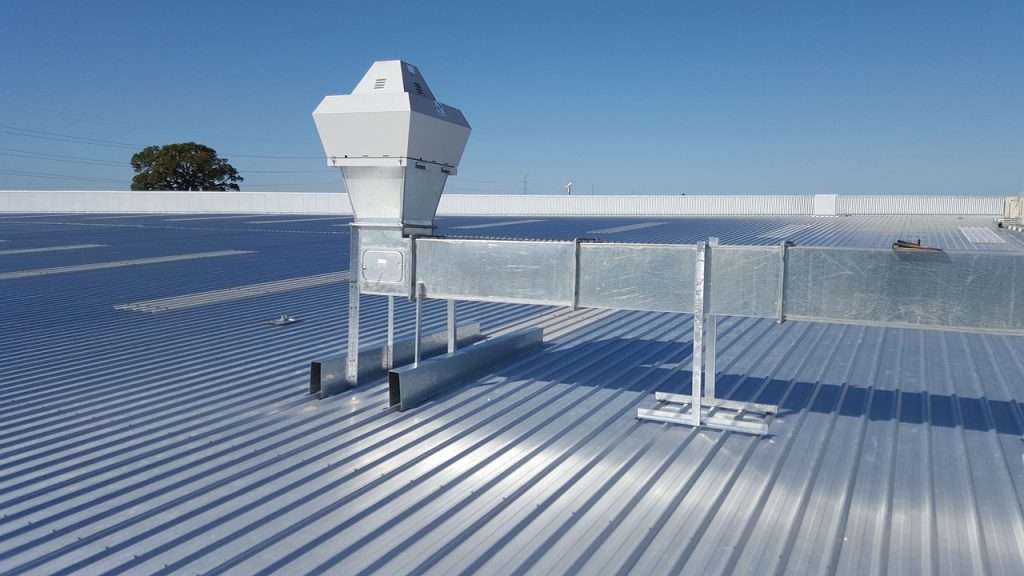Introduction: The Heart of Indoor Comfort 🏡💨
Imagine stepping into a cozy home on a chilly winter night or feeling the refreshing cool air during a sweltering summer afternoon. Behind this comfort lies the magic of HVAC systems—short for Heating, Ventilation, and Air Conditioning. These systems play a crucial role in maintaining indoor air quality, regulating temperature, and ensuring a comfortable environment in homes, offices, and commercial spaces.
In this article, we’ll explore the core components of HVAC systems, their functions, and how they work together to create a pleasant indoor climate. Whether you’re a homeowner, a student, or someone interested in mechanical systems, understanding HVAC basics can help you appreciate the technology that keeps our spaces livable year-round.
1. What Is an HVAC System? 🏠❄️🔥
An HVAC system is a combination of mechanical equipment designed to control the indoor climate by regulating:
- Heating: Provides warmth during cold weather.
- Ventilation: Ensures fresh air circulation and removes pollutants.
- Air Conditioning: Lowers indoor temperature and controls humidity during hot weather.
These systems are essential not only for comfort but also for maintaining healthy indoor air quality and energy efficiency.
2. Key Components of an HVAC System ⚙️🧩
HVAC systems may vary in size and design, but they all share several core components that work together:
🔥 Heating System:
- Furnace: Burns fuel (natural gas, oil, or electricity) to produce heat.
- Heat Pump: Transfers heat from outside to inside, serving as both a heater and air conditioner.
- Boiler: Heats water or steam, which circulates through pipes to warm the building.
💨 Ventilation System:
- Ductwork: Network of tubes that distribute heated or cooled air throughout the building.
- Air Filters: Capture dust, allergens, and pollutants, improving indoor air quality.
- Exhaust Fans: Remove stale air and odors from kitchens, bathrooms, and other areas.
❄️ Air Conditioning System:
- Compressor: Pressurizes refrigerant, which absorbs and releases heat to cool the air.
- Evaporator Coil: Extracts heat from indoor air, lowering the temperature.
- Condenser Coil: Releases absorbed heat outside the building.
🌡️ Thermostat:
- Acts as the control center, allowing users to set and maintain the desired temperature. Modern thermostats can be programmable or smart, optimizing energy use and comfort.
3. How HVAC Systems Work Together 🔁💨
HVAC systems operate through a series of interconnected processes that regulate indoor climate:
Heating Process 🔥:
- The thermostat detects when the indoor temperature drops below the desired setting.
- The furnace or heat pump activates, producing heat.
- Heated air is distributed through ducts and vents, warming the space.
Cooling Process ❄️:
- The thermostat detects when the indoor temperature exceeds the set limit.
- The air conditioner’s compressor pressurizes refrigerant, which absorbs indoor heat.
- The evaporator coil cools the air, which is then circulated through ducts, while the condenser coil releases heat outside.
Ventilation Process 💨:
- Fresh air is drawn from outside or recirculated from within the building.
- Air filters remove contaminants, and fans distribute clean air through ducts.
- Stale air is expelled outside, maintaining a healthy indoor environment.
4. Types of HVAC Systems 🏡🏢
HVAC systems come in different configurations, depending on the building type and climate:
- Split System: Common in residential homes, with separate units for heating and cooling.
- Packaged System: All-in-one unit, often used in commercial buildings or small homes.
- Hybrid System: Combines a heat pump with a furnace for improved energy efficiency.
- Ductless Mini-Split System: Ideal for homes without ductwork, providing individual room control.
- Geothermal System: Uses underground heat for energy-efficient heating and cooling.
5. Benefits of HVAC Systems 🌱💧
✅ Comfort: Maintains optimal indoor temperatures and humidity levels.
✅ Energy Efficiency: Modern systems consume less energy, reducing utility bills.
✅ Air Quality: Filters remove dust, allergens, and pollutants for healthier air.
✅ Humidity Control: Prevents excess moisture, reducing mold and mildew growth.
✅ Year-Round Performance: Provides heating in winter and cooling in summer.
6. Maintenance Tips for Efficient HVAC Systems 🧹🔧
To ensure your HVAC system operates efficiently and lasts longer, regular maintenance is essential:
- Replace Air Filters: Change filters every 1-3 months to maintain air quality and system efficiency.
- Clean Ducts and Vents: Remove dust and debris to ensure proper airflow.
- Schedule Professional Inspections: Annual check-ups by a certified technician can prevent costly repairs.
- Check Thermostat Settings: Use programmable thermostats to optimize energy use.
- Inspect Outdoor Units: Keep the area around outdoor units clear of debris and vegetation.
7. Energy Efficiency and Sustainability 🌎💡
With growing concerns about energy consumption and environmental impact, modern HVAC systems are designed to be more energy-efficient:
- Energy-Efficient Equipment: Look for systems with high SEER (Seasonal Energy Efficiency Ratio) and AFUE (Annual Fuel Utilization Efficiency) ratings.
- Smart Thermostats: Devices like Nest or Ecobee learn your schedule and adjust settings to save energy.
- Renewable Energy Integration: Geothermal heat pumps and solar-powered HVAC systems reduce reliance on fossil fuels.
- Building Insulation: Proper insulation and sealing reduce the workload on HVAC systems, improving efficiency.
8. Future Trends in HVAC Technology 🚀🌱
The HVAC industry is continuously evolving, with innovations that enhance efficiency, sustainability, and user convenience:
- Smart HVAC Systems: Integrated with IoT (Internet of Things) for remote control and real-time monitoring.
- AI and Machine Learning: Predictive analytics optimize system performance and energy use.
- Eco-Friendly Refrigerants: New refrigerants with lower environmental impact are replacing older, harmful chemicals.
- Zero-Carbon Buildings: HVAC systems are becoming essential in achieving net-zero energy buildings.
Conclusion: The Backbone of Indoor Comfort 🏡❄️🔥
HVAC systems are essential for maintaining a comfortable, healthy, and energy-efficient indoor environment. By understanding their components and functions, homeowners and businesses can make informed decisions about installation, maintenance, and upgrades. As technology advances, HVAC systems will continue to become more efficient, environmentally friendly, and smarter—ensuring indoor comfort while reducing energy consumption and environmental impact.
Whether you’re upgrading your home’s heating and cooling or simply curious about how these systems work, the world of HVAC is a fascinating blend of engineering, technology, and comfort.


